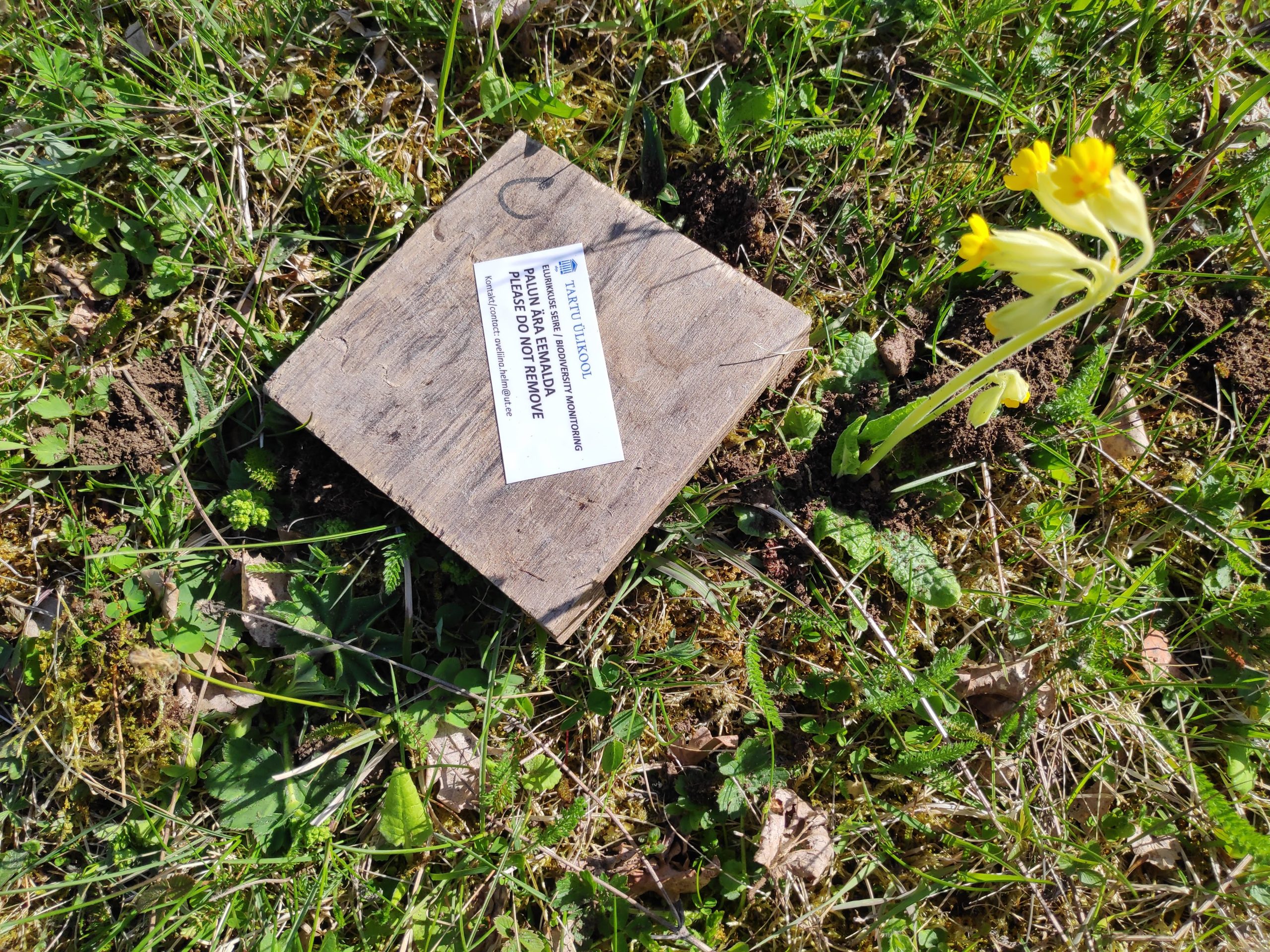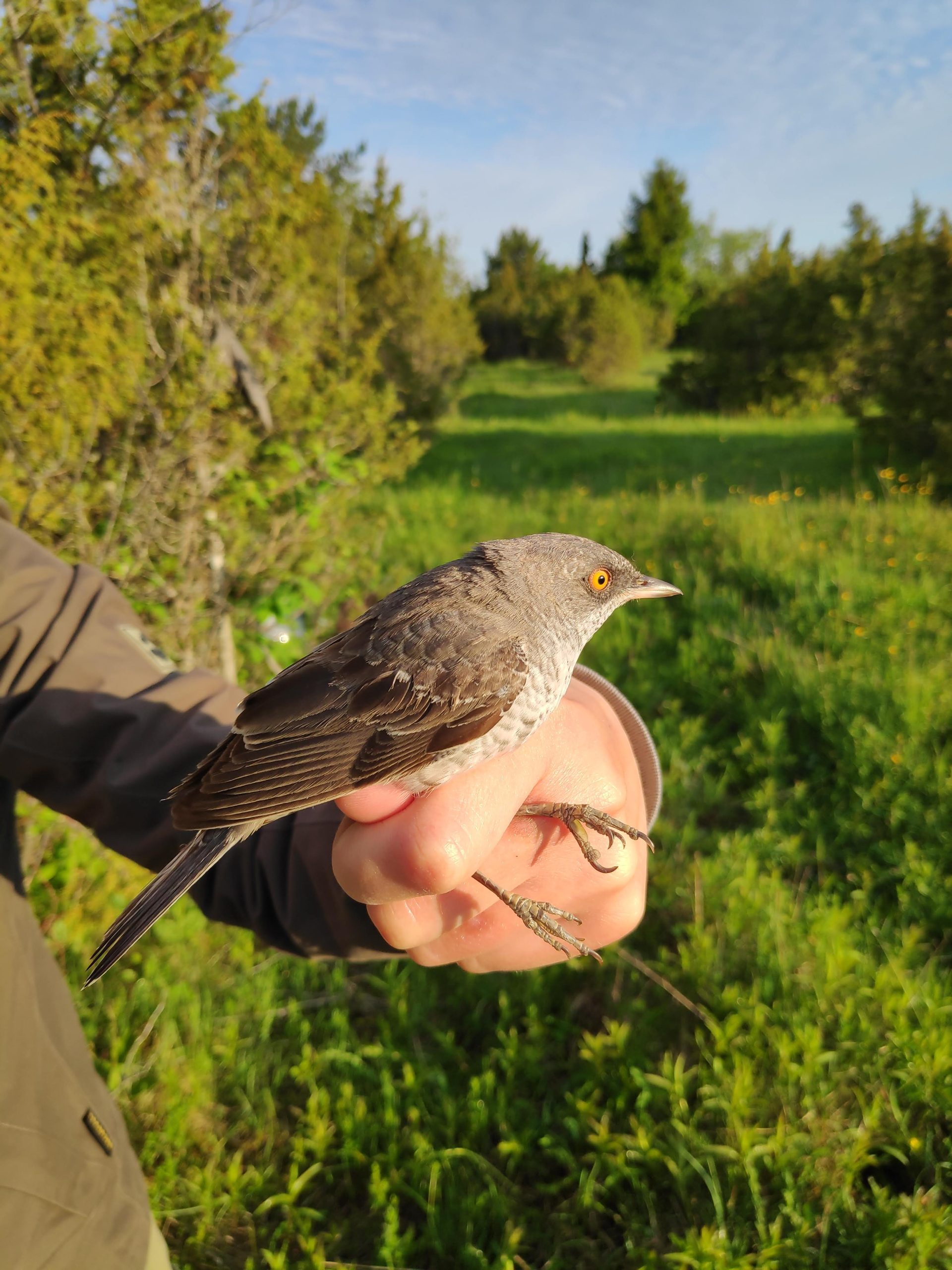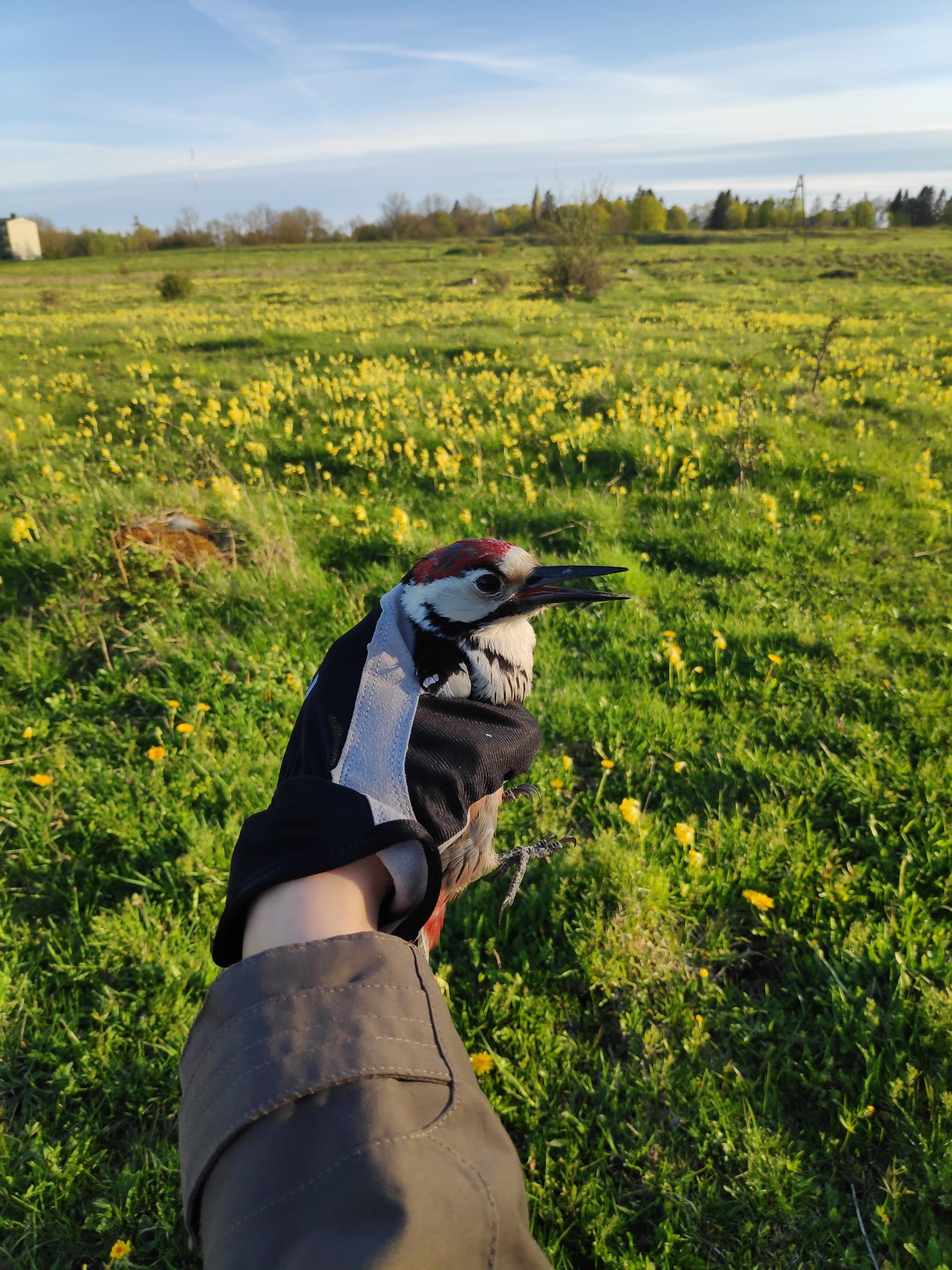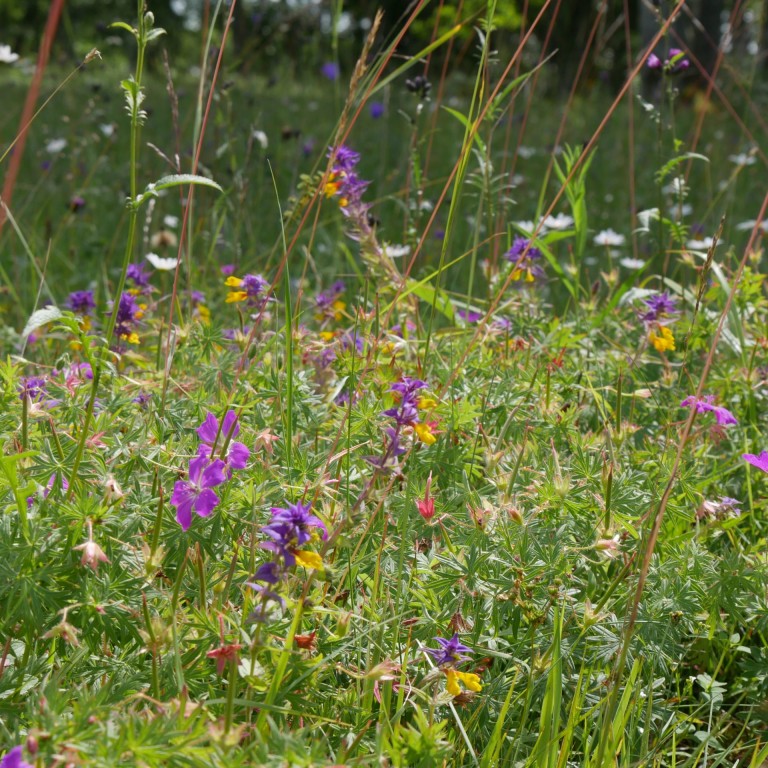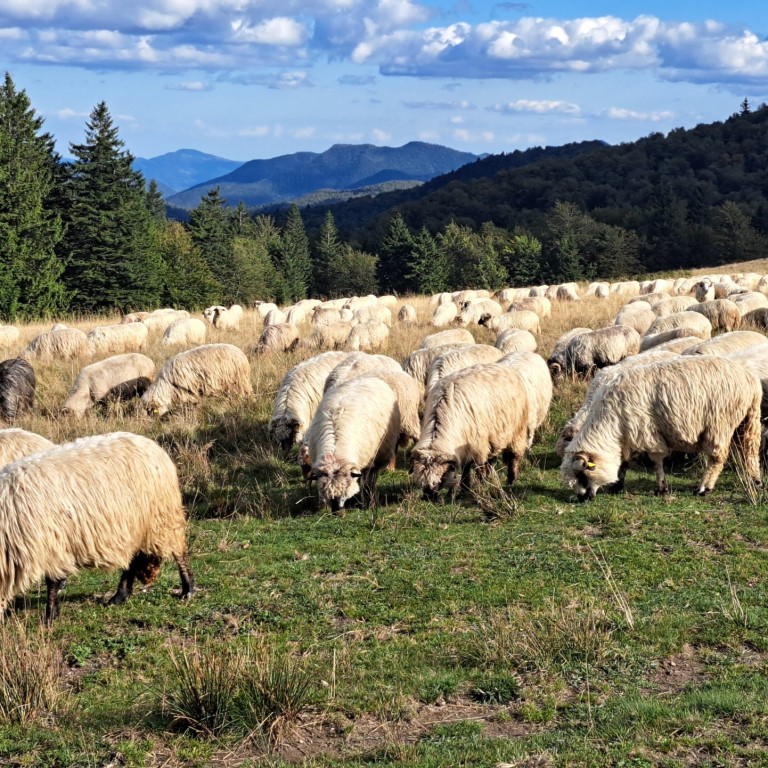In May and June, a comprehensive dataset on the birds that feed there was collected from the grasslands of Western Estonia as part of the InterRest project. The aim was to find out how the ecological condition of the grassland and its location on the landscape affects the species composition of the birds there, the number of individuals and the diet of the birds. For this purpose, a point count of birds, bioacoustic monitoring, an experiment to collect the main food base of grassland birds (arthropods) and capture birds to collect excrement were carried out. For bioacoustic monitoring, compact audio recorders (AudioMothTM) were used to record the richness of morning songbirds. To estimate the biomass and species richness of arthropods, cups were dug into the ground, and the sweet liquid in the cups lured the arthropods into the cups. To prevent rainwater, the cups were covered with a special wooden roof. The species composition of arthropods can be known later through DNA analyses.
The most labor-intensive were the attempts to catch birds. For this, birds were caught from sunrise to mid-morning with a special bird-catching net, and fresh bird droppings were searched for in the grasslands. As a rule, birds excrete after entering the net, and the obtained excrement was placed in cups filled with ethanol using sterile means. Later DNA analyzes will reveal what the birds consumed as food from the grasslands and whether the condition of the grasslands affects the birds' food base. To maximize the capture efficiency, all captured birds were ringed.
125 birds from 24 different species were ringed during the bird catching experiment. In addition, we collected 80 fresh droppings left by birds from grasslands. The most numerous of the birds caught was Sylvia curruca, which is one of the most numerous nesters in the grasslands and the surrounding shrubbery. Dendrocopos leucotos, Jynx torquilla and various species of tit were also caught in the net - such species diversity shows that it is a rich and diverse grassland. We also succeeded in catching and ringing an endemic species of the grazed hemlocks in western Estonia - Sylvia nisoria. Molecular analyzes will show what the diet of these species consists of.

